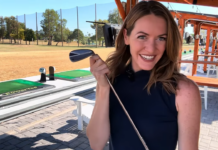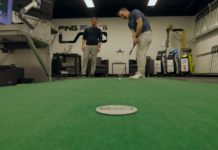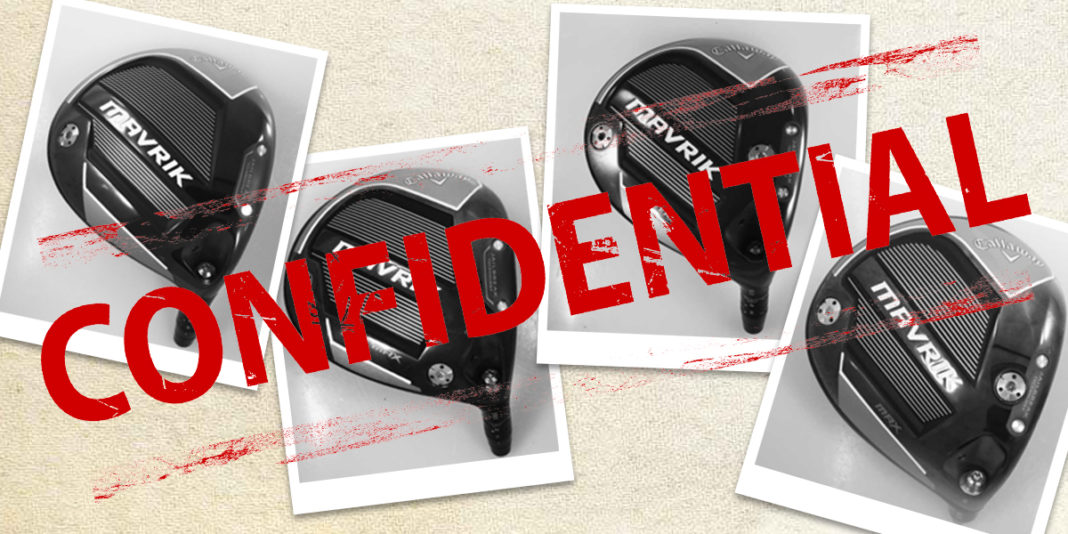New year, new gear
By Brad Skupaka
Hello and welcome to the first edition of GOLFTEC’s equipment and fitting spotlight column! Today we’ll discuss a couple of hot topics in the world of equipment and club fitting while also taking a look at a GOLFTEC student’s success story.
Jump to the section you want to read:
As we all know, it’s that time of year where most major club manufacturers flood the market with new gear and 2020 is no exception to that norm. If you watched the Sentry Tournament of Champions at Kapalua last weekend you might’ve noticed that some of the golfers had some new toys in their bag. One in particular that caught our eye was Xander Schauffle who propelled himself into a three-way playoff with the help of his new Callaway Mavrik driver. Unfortunately, we have not had the chance to get our hands on any of the new Mavrik clubs yet. However, given the information that is available to us, we have done our best to speculate what is on the horizon with the new Callaway Mavrik.
Product Preview – Callaway Mavrik
Callaway’s 2020 driver has made its way to the USGA conforming list. In total 14 different versions are on the list with multiple lofts of each. Many of these are likely to be products that will never make it to the retail shelves and are reserved strictly for tour players (For example a left-handed only 440cc model is likely reserved for Phil). Historically Callaway has indicated other tour only drivers with the use of a diamond on the heel. These models are typically lower spinning and/or fade bias which are just not what the average consumer needs.
The three or four versions that you’re likely to see make it to retail are the Mavrik, Mavrik Sub-Zero, Mavrik Max and what appears to be a Sub-Zero version of the Mavrik Max. This would follow Callaway’s past trend of having a standard model in the Mavrik and then a lower spinning version in the Sub-Zero. The Max models appear to be your draw model and from the name and sole design presumably your max forgiveness model. The Mavrik Max Sub-Zero does come with a tour designation and single diamond on the heel but it’s an interesting name and design. It appears to be a high MOI model but with low spin characteristics, which is a difficult design to achieve. Hopefully, it will make it to retail as we could see it being a favorite among higher spin players.
One characteristic the entire line shares is the elimination of a weight track for just one or two fixed weights; similar to Rogue from 2018. By eliminating the track they were likely able to free up some additional weight to be placed elsewhere in the head. Jailbreak is also present in each model and a “Flash Face SS20” stamped on the face. Jailbreak has been Callaway’s patented technology which helps to increase ball speed for the previous 3 models. Flash Face was the face designed using artificial intelligence present in the Epic Flash, presumably the “20” in “SS20” stands for the year, and it’s likely a newly designed face using more AI in an effort to further improve ball speeds and performance.
Whatever models end up making it to retail it’s certain to be worthy of testing to see if you can pick up a few more yards.

What launch monitor numbers should I focus on?
If you’re buying a new driver off the rack you’re likely doing yourself a disservice. If you’re buying one without first testing it on a launch monitor you’re just making a mistake. Quality launch monitors are extremely accessible today, but if you do not know what to focus on they can be overwhelming. This is why it’s best to have an expert club fitter help you through the process. But if you choose to go in alone there are three or four main numbers I would focus on aside from the obvious of distance and direction.
Ball speed – Today’s drivers produce ball speeds that are so much faster than anything even two-three years old, especially on shots that are hit off-center. Simply put you want your average ball speed as high as possible. However, because of the USGA rules, ball speeds on perfectly struck shots have been nearly maxed out for a while. so manufacturers are now designing drivers that produce high ball speeds on shots that are struck off-center, which is the majority of shots golfers hit. So if you have purchased a driver in recent years you may not see a huge jump in ball speeds on that center struck shot, but your average ball speed is likely to increase, and more ball speed means the potential for more distance.
Launch Angle – If we had to cut a launch number from this list it would be launch angle. While it’s important, for most golfer’s having this number out of their “optimal” range is less detrimental than the others. Additionally, most golfer’s typically have a launch angle that is within 3 degrees of optimal while their backspin is nearly double what it needs to be (more on that to come). Most golfers should aim for a launch angle around 13-15 degrees, if you’re a high-speed player error on the low end of this and if you’re a low-speed player error toward the higher end. But do not compromise your spin or directional control in an attempt to hit the perfect launch, for most golfers close enough is all that is needed.
Back Spin – If you can only focus on one number this is it. It would not be uncommon for a golfer with an old or poorly fit club to have backspin over 4000 rpm, costing them 20-30 yards easily. Part of the reason for this could be their swings but having the correct equipment can still make that swing work better. Aim for 2500 rpm of backspin as a starting point, similar to launch angle high-speed golfers should error closer to 2000 rpm and slower speed golfers error closer to 3000 rpm.
Landing Angle – is the angle at which the ball contacts the ground. You do not hear it talked about much but it would be the 2nd most important number on this list to me. For tee shots, golfers should aim for a landing angle of 35 degrees. This will ensure that the ball can maximize carry but still be landing at a sharp enough angle to have a chance at rolling out. The conditions of the course you play will play a part in the amount of roll you get but you can do everything in your power to maximize it.
So if you’re trying to buy a driver off the rack you’re still making a mistake, but using this information you can at least make a more informed mistake. Your best bet is to find an expert fitter to help guide you through the process so that the investment you make in new equipment is best for your game.
Student Success
Here at GOLFTEC, we get countless reports highlighting students who have undergone successful club fittings. Among other factors, the metrics measured by our launch monitors are great indicators of the success our students have found through our club fitting process.

As you can see, this student was just fit into a new Callaway Epic Flash driver. He picked up 10 MPH ball speed while also increasing his spin rate and launch angle which ultimately led to an increase of 16 yards in distance!
The moral of the story here is that if you haven’t been fit for clubs in a while (or ever) you definitely should because you’re most likely leaving yards on the table.
Ready to purchase clubs? Schedule a TECFIT with a local GOLFTEC Coach today!











